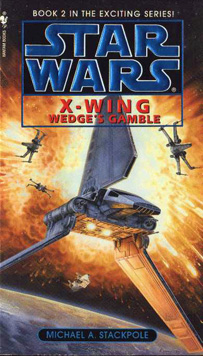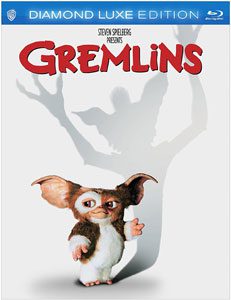With “Wedge’s Gamble” (1996), the second book in the “X-Wing” series, Michael Stackpole may have inadvertently inspired Aaron Allston to create Wraith Squadron three books later. Here, the members of Rogue Squadron spend more time as undercover operatives on Imperial Center than they do in space dogfights. And even if this is technically outside of the pilots’ skill sets, no reader — except those rare few who like their books to read like video games — was complaining.
A step up from the solid introductory book, “Wedge’s Gamble” is meticulously plotted with gripping character arcs smoothly intertwined. We get more of the Mirax-Corran-Erisi love triangle, more of the mystery of whether or not Tycho is a traitor (it feels like he isn’t, yet the raw facts say he is), and some of the most horrific scenes in “Star Wars” fiction as General Derricote devises a way to infect all alien species with the Krytos virus so the Rebels inherit a poisoned planet.
Also, this is a pivotal novel in the timeline, as it marks the point that the Republic takes over Coruscant from the Empire, a huge step in legitimizing the provisional government and inspiring more planets to defect from the tyrannical Empire. Echoing Timothy Zahn, Stackpole nicely peppers in some political stuff; unlike in the first novel, a main movie character — Princess Leia — joins the action. Five years earlier, “Heir to the Empire” started with the New Republic installed on Coruscant, but it wasn’t until this book that this crucial story was told. (It’s too big for one book, though; the story continues in “The Krytos Trap.”)
One aspect of the movies that is ever-present yet underplayed is the racism of the Empire, and “Wedge’s Gamble” is one of the key novels to address this theme, both through Isard’s and Derricote’s plan to poison the aliens of Coruscant, and a scene where Gavin is wrongly accused by an underground Bothan freedom fighter of being a bigot. Gavin ends up having a crush on the Bothan, and it leads to an amusing — and decidedly sci-fi, considering that there’s not much of a real-world parallel — sequence where Corran recalls his tryst with an alien.
Yet for all the smart writing and importance to the overall saga, “Wedge’s Gamble” also harkens back to the enjoyably gritty, almost-thrown-together feel of the Brian Daley “Han Solo Adventures.” Indeed, Corran finds himself flying a Z-95 Headhunter (the precursor to the X-Wing, and a Daley invention) by the end of the novel. (One sloppy aspect to “Wedge’s Gamble” that was also a problem in “Rogue Squadron”: Far more typos than in most “Star Wars” novels.)
There’s so much going on here that some storylines are merely resolved with a sentence. But it ends on a cliffhanger involving main character Corran, and leaves several other threads dangling, making it almost impossible for a reader to resist picking up “The Krytos Trap.”


